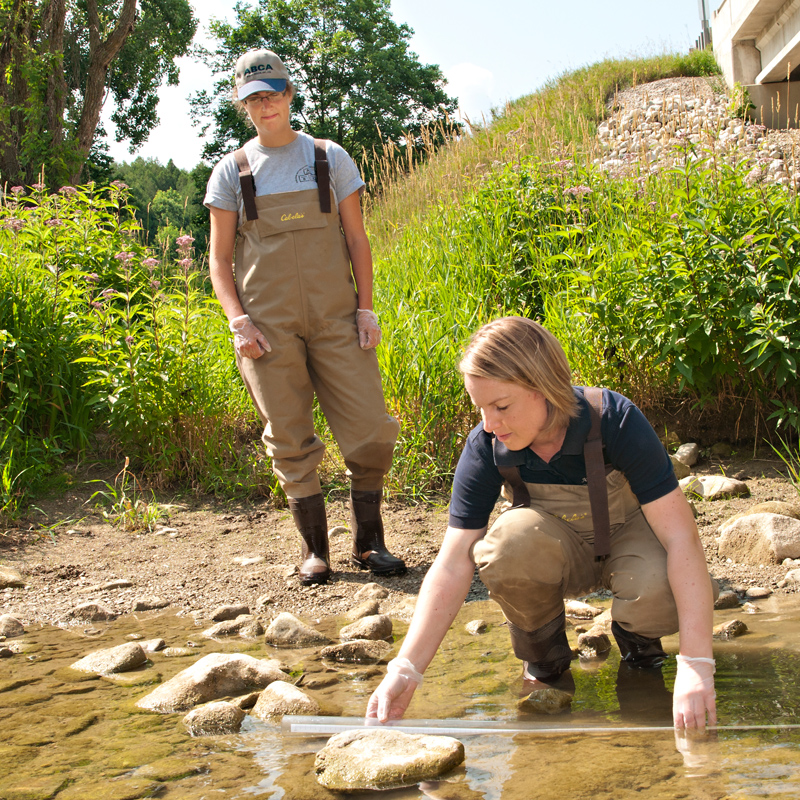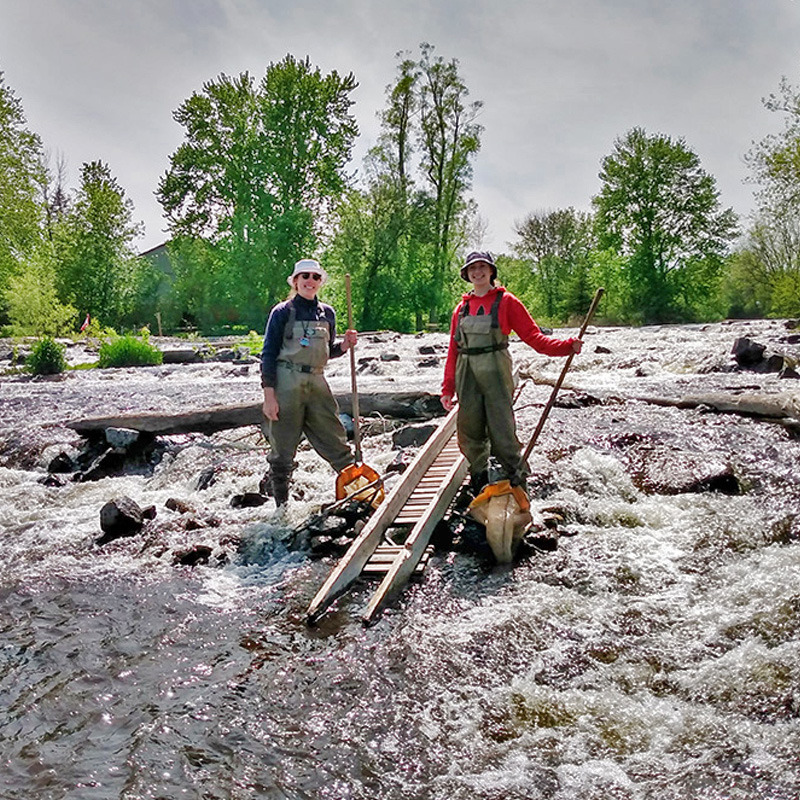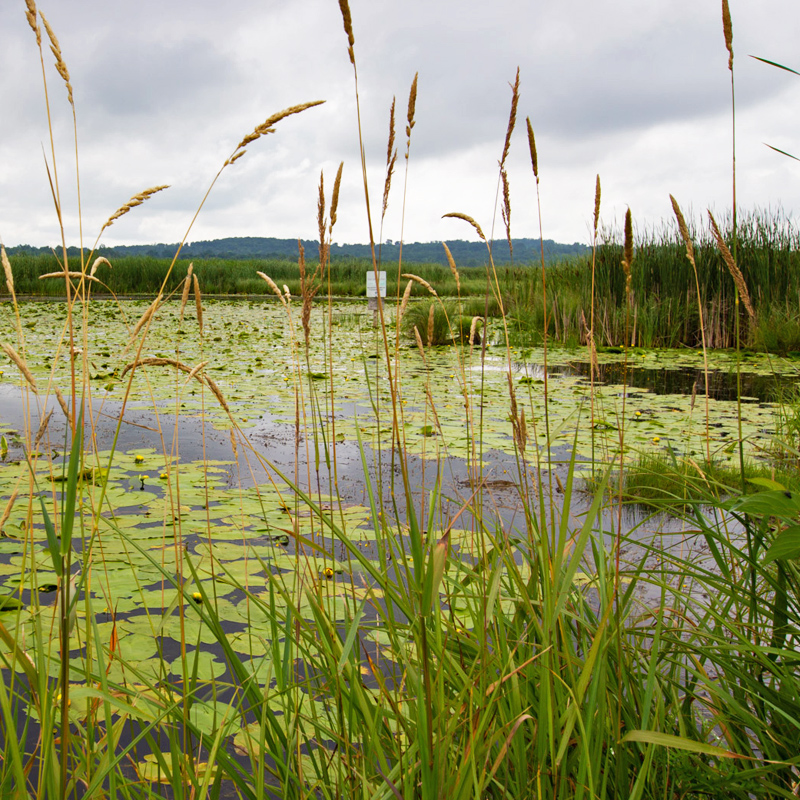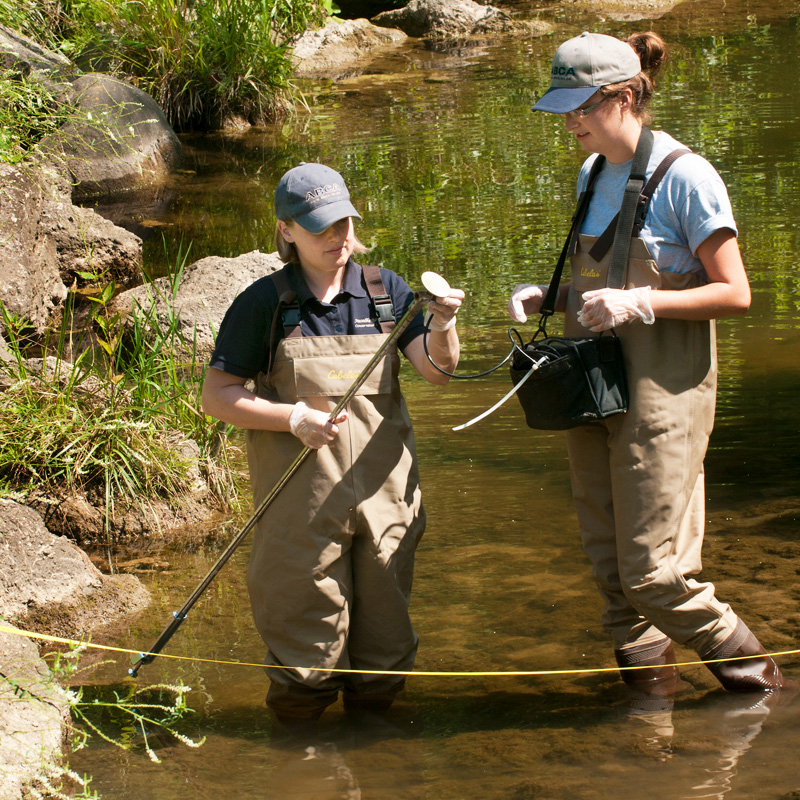Reporting on Surface Water Quality
About Surface Water
The three surface water quality indicators reflect key issues related to surface water quality across the province: nutrients (Total Phosphorus), bacteria/waste (E.coli), and aquatic health (Benthic Macroinvertebrates). Chloride was measured for benchmark purposes but not included in the overall grade.
Total Phosphorus
Phosphorus is a chemical that is occurs both naturally and as a result of our activities. It is typically used in fertilizers and is found in municipal and agricultural waste. It promotes plant growth, yet high concentrations can be harmful on the environment causing algae blooms which can reduce the oxygen available to plants and fish.
Wetlands and forests help to filter phosphorus, reducing its impact on lakes and rivers. Without these riparian zones, however, phosphorus can run off easily contaminating both surface and groundwater sources.
Phosphorus can also impact human health indirectly by contaminating drinking water sources.
The Provincial Water Quality Monitoring Network (PWQMN) is the main source of total phosphorus data for many conservation authorities.
E.coli (Escherichia coli)
E.coli is a species of bacteria that is broadly accepted as the key indicator of fecal contamination in surface water sources. The main sources of E.coli are municipal sewage discharges, or runoff from failing septic systems, or agricultural operations. E.coli is often more present after significant rainfalls or snow melts.
E.coli can impact human health if it gets into drinking water sources or if people ingest it while swimming. It can cause severe illness including diarrhoea, cramps and possibly fever. Young children, the elderly and chronically ill are at particular risk.
Currently, there is no province-wide program whereby conservation authorities collect water samples for E-coli. However, many Conservation Authorities take surface water samples, some through monitoring programs in conjunction with partner agencies, such as Public Health Agencies. Conservation Authorities indicate in their watershed report cards whether or not they monitor and report on E.coli. Some Conservation Authorities are involved in beach monitoring and reporting for E.coli in partnership with local public health units.
Benthic Macroinvertebrates
To help determine the quality of water in streams, conservation authorities collect small organisms (Benthic Macroinvertebrates) from the streams’ sediment. These small bugs act as barometers of water quality. Some can tolerate pollution while others disappear as pollution increases. Currently, most conservation authorities have a benthic monitoring program. The current WRC guidelines (2023) adopt the Hilsenhoff 1988 Family Biotic Index as modified by New York State.
Chloride
Winter maintenance chemicals containing chlorides (e.g., road salt and de-icers) are impacting our streams, rivers, and lakes across the province. It is affecting our ground and surface water quality including important municipal drinking water sources. Keeping the public safe in winter conditions must be carefully balanced with the protection of our aquatic environments including drinking water sources.
For the 2023 report cards, including chloride is optional and is left to the discretion of each individual conservation authority. As a result, it is not part of the formal grading of the Watershed Report Card. This may change for future report cards.
Surface Water Quality Monitoring Sites
The conservation authorities strive to have a surface water quality monitoring site for each subwatershed that represents the quality of the water at the outlet. If there is more than one site, information from the site closest to the outlet is generally used for indicator reporting.
Threats to Surface Water Quality
Stormwater poses a significant threat to surface water quality. After a big rainstorm or snowmelt, pollutants from a variety of activities on the land can travel very quickly as runoff to watercourses.
In more naturalized areas, stormwater is absorbed into the ground or filtered by plants or trees. In urbanized areas, however, the water runs rapidly into storm drains, municipal sewers and drainage ditches into streams, rivers and lakes. Along the way, it picks up pesticides, road salts, heavy metals, oils, bacteria and other harmful pollutants as it travels across lawns, parking lots and construction zones. Stormwater can also cause increased beach closings and contaminated water bodies.






